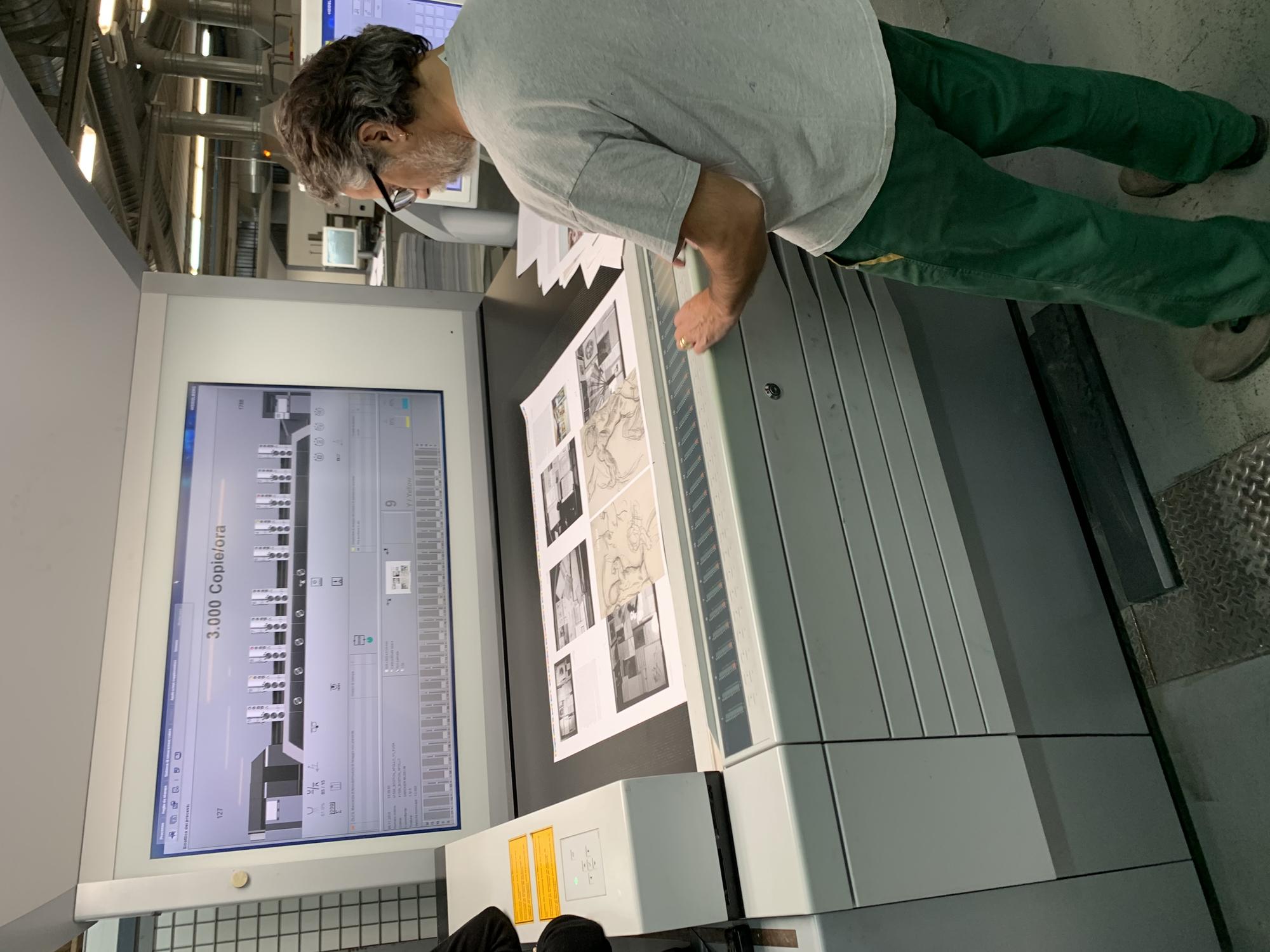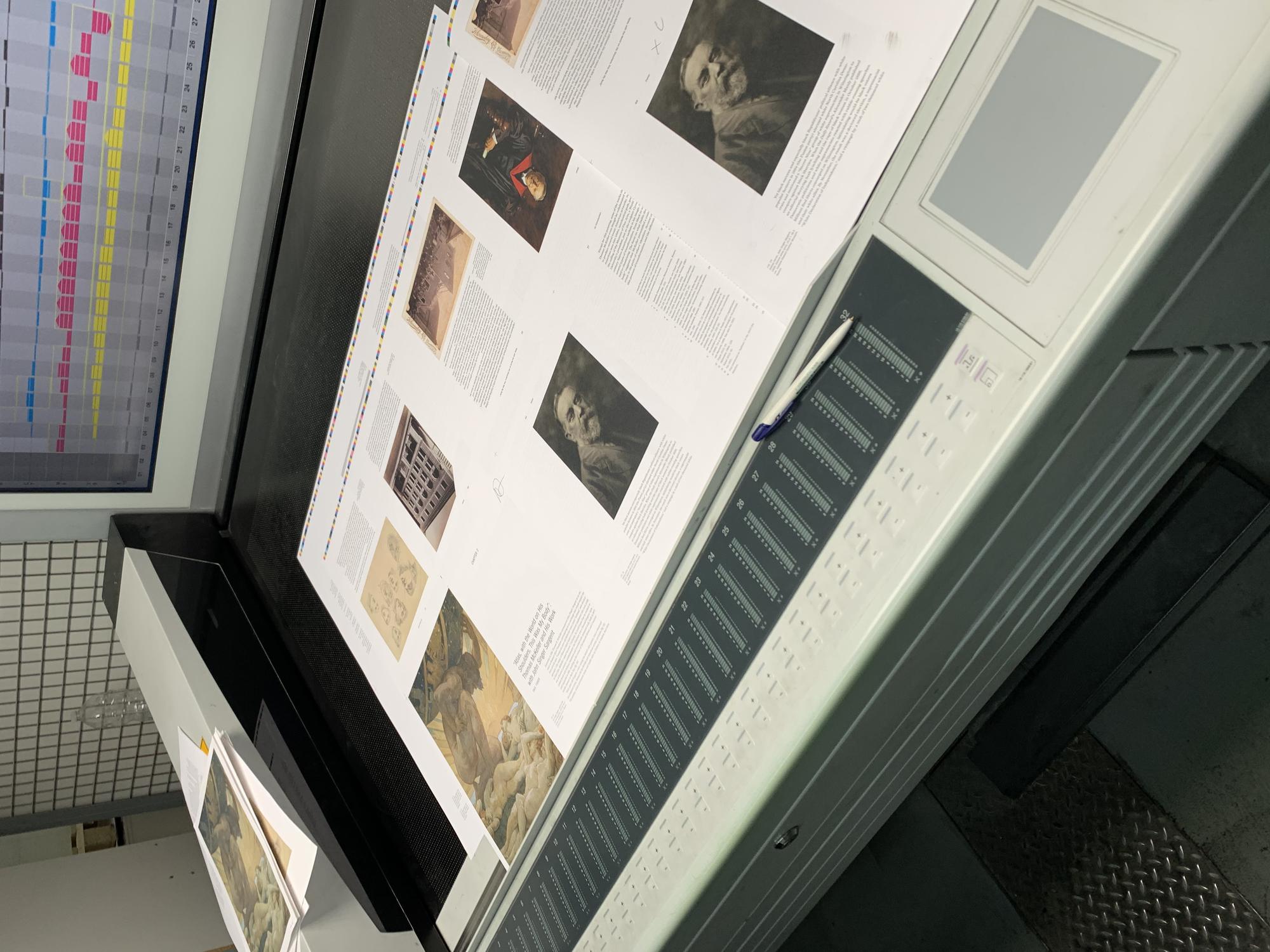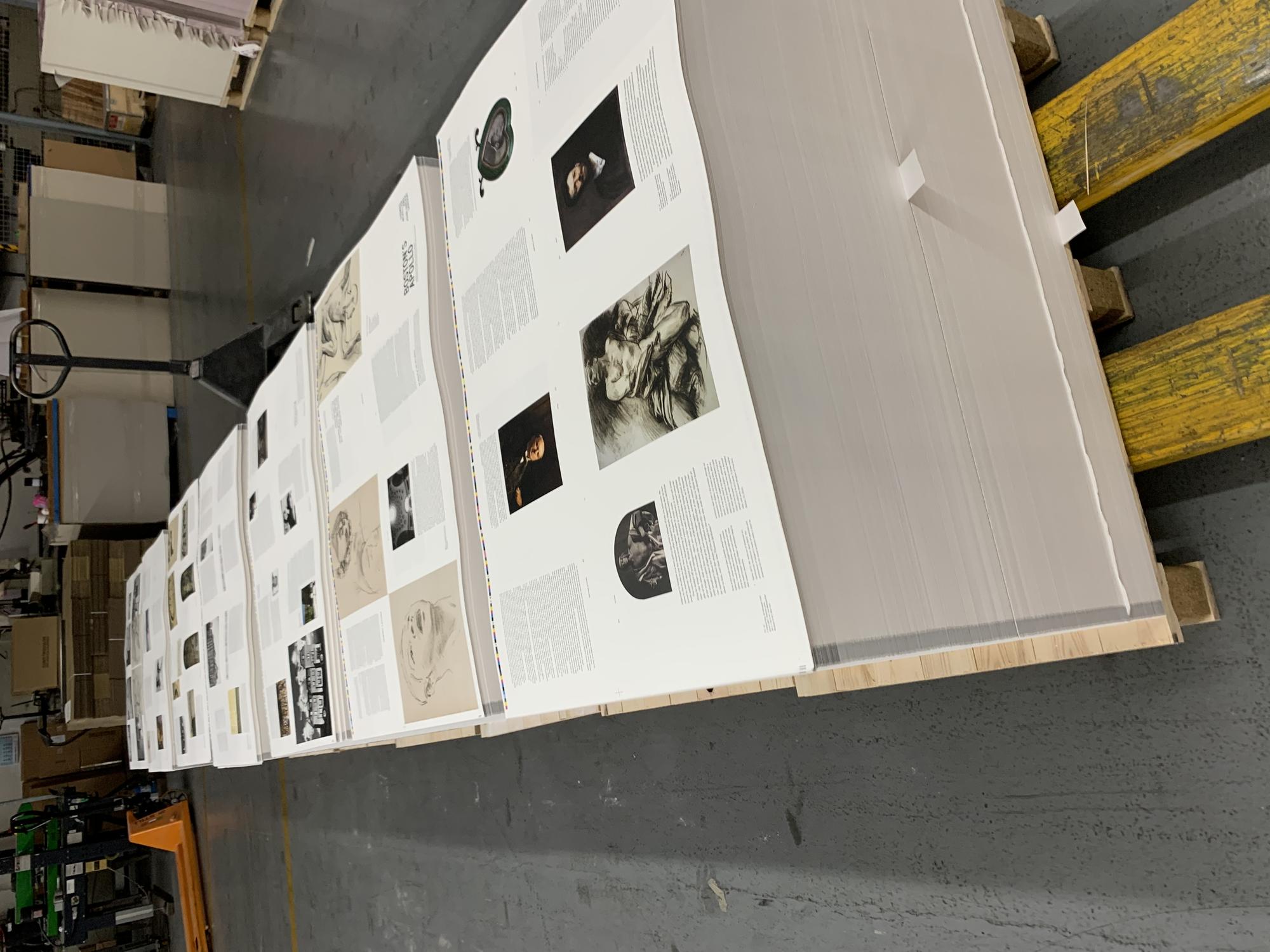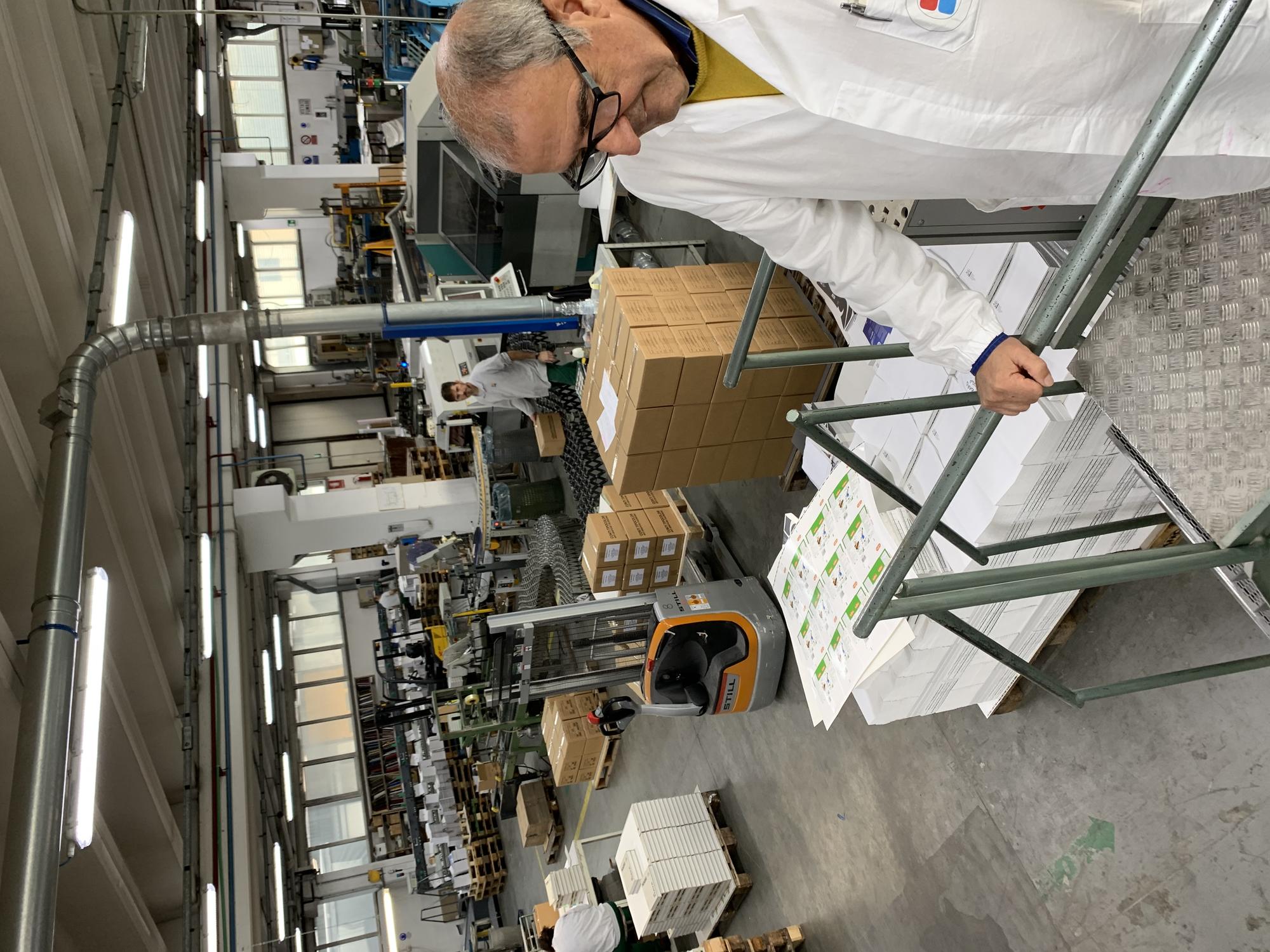I’ve always loved books, from children’s books, to airport paperbacks, and even text books. Now, as curator, it’s a rare privilege to help shape the exhibition catalogues that our museum produces. For Boston’s Apollo: Thomas McKeller and John Singer Sargent, I started with the book’s concept and then recruited specialists to contribute their own ideas, like professor Nikki Greene, writer Colm Tóibín, and legendary conceptual artist Lorraine O’Grady. Research and writing demanded most of our time. Then the Gardner’s Head of Collections Access—and project manager for all Collections department publications—Elizabeth Reluga created the production timeline; liaised with designers and distributor, Yale University Press; and sourced images for the illustrations. After seemingly endless rounds of copy editing and design, the book was ready for the printer.
Printing is an art form. It’s a magic that transforms intellectual labor into a tangible outcome: a book. We work with printers all over the world to achieve the best possible results for each exhibition catalogue. For Boston’s Apollo, we chose Conti Tipocolor, a family firm established 1906, located just outside Florence.
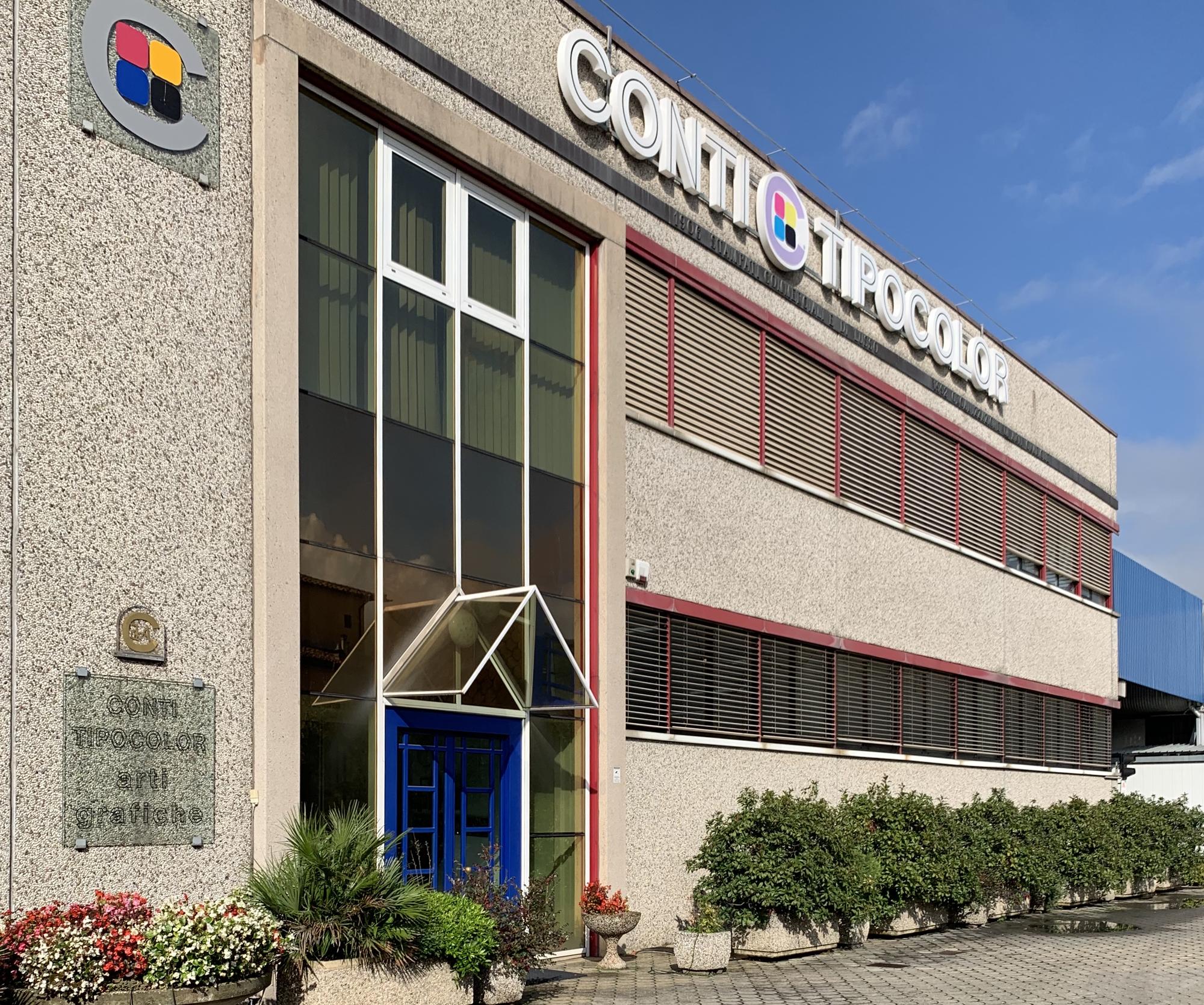
Conti Tipocolor, Calenzano, Italy
Conti specializes in art books of exceptional quality, maintaining control over every aspect of the printing process, from pre-press to binding. Conti works with many museums, galleries, and publishers around the world.
Paper is the backbone of each project. At the core of this exhibition is a group of charcoal drawings of Thomas McKeller, so we reviewed samples of different stocks to find one that conveyed a sense of the artist’s materials. While most books are printed on coated papers that appear shiny or glossy, we chose an uncoated paper with a slightly rough texture that evoked Sargent’s heavy drawing sheets and conveyed some sense of his medium’s irregular finish.
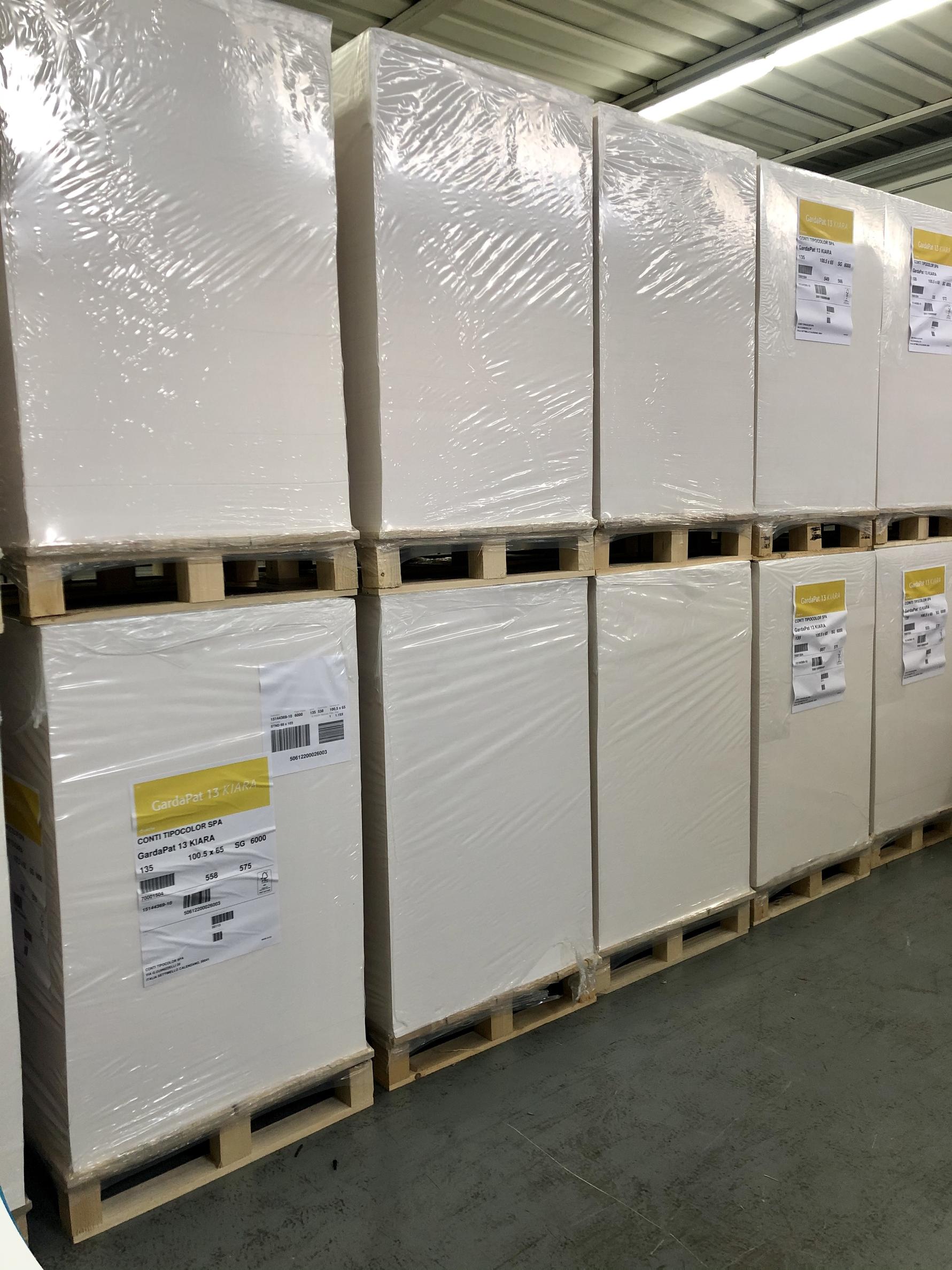
Pallets of paper stock at Conti Tipocolor
The first printing test was unsuccessful because the paper turned out to be so rough that the images did not register correctly. Instead we settled on a smoother version called Polar, also milled by Munken, a specialty paper company based in Poland.
With the new paper in hand, Conti’s technicians reviewed the digital files for any potential printing challenges, and then sent them to a machine that etches the image of each page onto a thin metal plate.
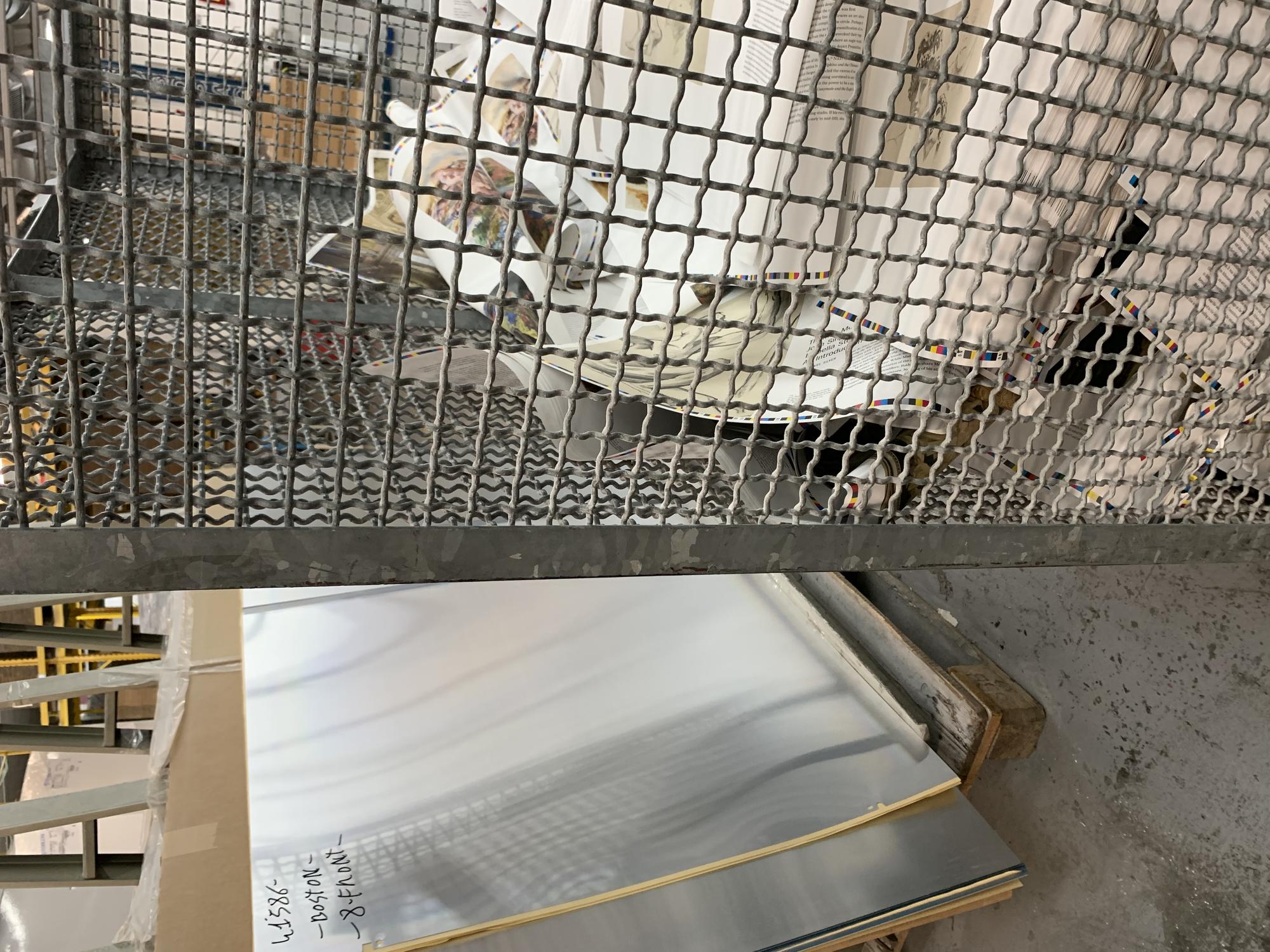
A single large plate, leaning on the left side of this photograph, prints eight pages on one side of a massive sheet. Each sheet comes off the printer with sixteen pages printed on it (back and front)
Illustrations are paramount to every art book. To achieve the best possible results, I went to Florence to review and sign off on each one. Conti’s technicians printed the pages on a Heidelberg Speedmaster offset sheetfed printer.
Offset means that the machine prints four primary colors (cyan, magenta, yellow, and black) separately. It creates each image by layering them together. Thus, the primary colors on every page can be fine-tuned to create the best-looking images.
Printed reproductions of artworks represent a balance between truth to the original and our desire to make the book as attractive as possible. The cromista (color printing expert) told the machine which colors to add or subtract to achieve our desired effect. To get the best images, he ran test sheets and together we compared each version to identify the ideal version.
Look at this example, Beauford Delaney’s portrait of James Baldwin.

Pages from Boston’s Apollo showing Beauford Delaney’s portrait of James Baldwin at Conti Tipocolor
The charcoal drawings were especially difficult to reproduce. The texture of the paper we chose made it even more complicated as it could only hold a certain amount of black ink. It took many tries: check out all the discards!
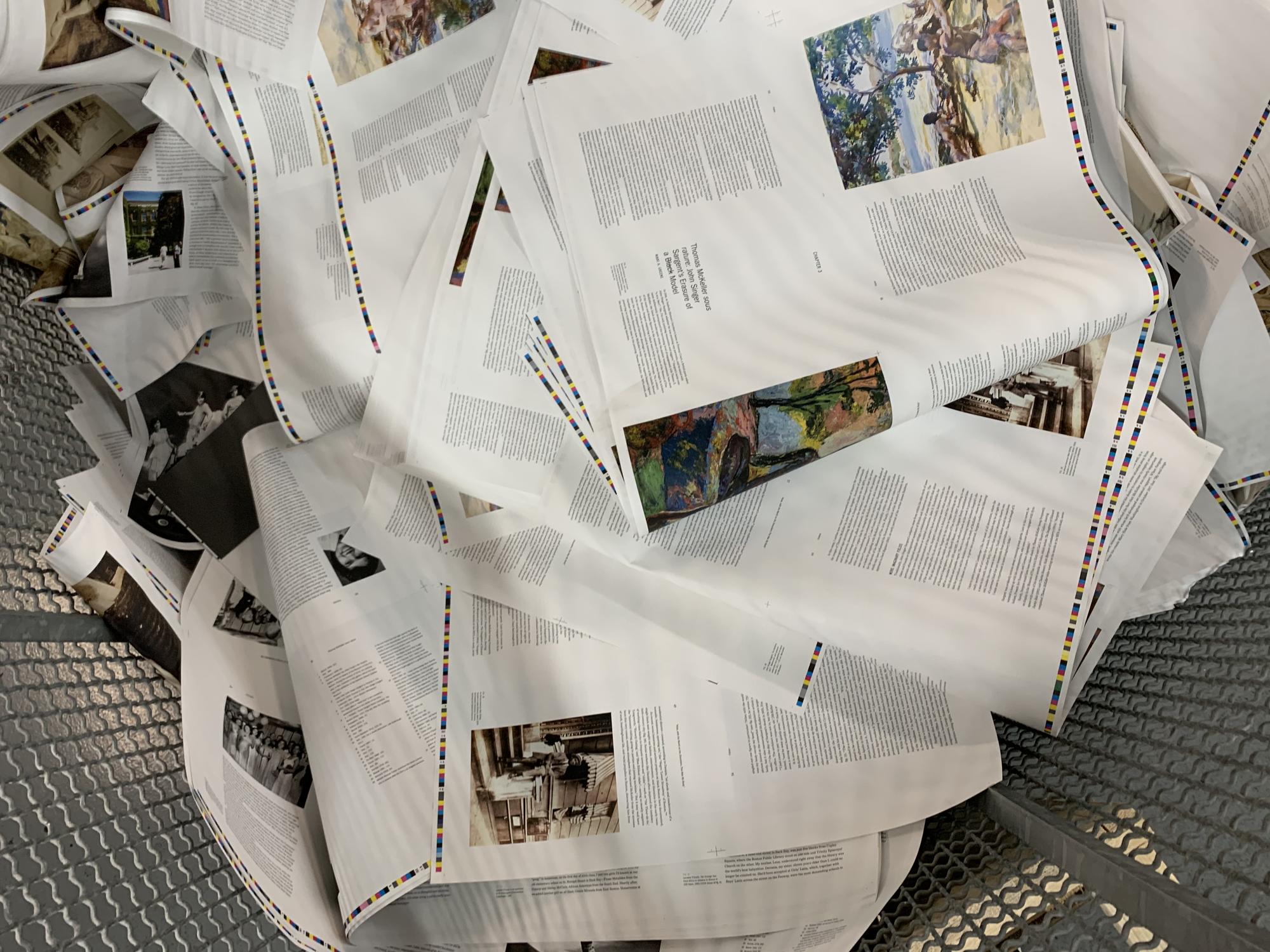
Discarded pages from Boston’s Apollo at Conti Tipocolor
Once we were happy with every image, I signed off on each sheet, and the cromista produced the entire print run. When all the sheets were done printing, technicians rolled the pallets into a separate room for cutting and folding.
The cover of a book is in some ways even more important than the pages—it protects the pages, advertises its content, and sells the book. We ran many versions of the cover for Boston’s Apollo, enhancing the black lines of the charcoal drawing so that they appear to jump off the page.
The cover for Boston’s Apollo at Conti press
To give it an extra pop, we decided not to coat the cover with plastic, a typical practice that protects from wear and tear but also diminishes the impact of colors and their visual effect. A separate machine stamped the title into the cardboard with white foil, further enhancing the haptic qualities that make this book appeal to all of the senses. When you pick up a copy, the difference is apparent.
The final step is binding, done by a special machine.
Every book we produce is a labor of love from start to finish. We are always excited to work with specialists who value beautiful books as much as we do and who can help us to produce the most appealing and thoughtful presentation of new ideas. In this case, our visitors seemed to agree. We sold through the original print run in a few months and our second printing will arrive at the Museum in August 2020!

